Circus Memorabilia: Bringing the Big Top Home
by: Victoria Moore
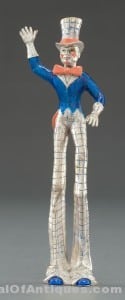
From as long ago as I can remember one of my fantasies was to run away and join the circus. That was probably after seeing my first Ringling Bros. and Barnum and Bailey show at the Forum in Inglewood, California. Now that I’m an adult I’ve discovered I still have that same dream. It’s remained a pleasant memory. To this day, whenever I see a performance by Cirque du Soleil on t.v., I can still hear calliope music, smell popcorn and peanuts, and get excited by the ringmaster. In my wish to keep those memories alive I’ve found a whole world of circus memorabilia that includes gorgeous lithographic posters, cookie jars, toys, books, magazines and figurines. Besides being highly nostalgic, and available in every price range, this collectible is also an excellent way to bring home a day of magic.
“I’ve noticed a surge in interest in the circus, in the past five years, because of the movies “Water For Elephants” and “Big Fish,” said Jennifer Lemmer Posey, Associate Curator at the John and Mable Ringling Museum of Art in Sarasota, Florida.
Built in 1931 by John Ringling to showcase his baroque and renaissance art collection, the circus museum was later built after he died in his honor, by A. Everett Austin. Located on 60 acres along with John and Mabel’s historical home, “Ca’d’Zan,” and a recreation of Mabel’s formal wagon wheel garden, it’s a community favorite.
“Visitors usually come for one event and end up visiting everything,” said Lemmer Posey. “We usually get a lot of calls from those interested in circus posters too.”
That’s not surprising considering one of the top circus collectibles is the circus poster. Available at Philip Weiss Auctions, Heritage Auctions, and other venues, they’re as striking now as when first seen by eager circus fans on barn doors and plain wooden fences. When Joshuah Purdy Brown (1802-1834) changed the circus game by holding his performances under a large tent it became necessary to utilize printed bills to advertise shows in town for one day only.
By 1822 the expense of printing posters was reduced because of the invention of the steam-powered press. Lithography, “a method of applying design in reverse onto limestone with a grease crayon or liquid” was the most inexpensive way of making posters. Since the circuses often used “sheet” as part of the poster’s description the measurement 28” x 42,” the exact size of a lithographic stone, collectors should used that as an indication of a poster’s authenticity today. Strobridge, a Cincinnati, Ohio printing company from 1847 to 1960 produced posters for circuses all over the world. One of their most famous is Barnum and Bailey’s Greatest Show on Earth, (1901).
Besides over 8,000 posters, which have to be viewed online due to their fragility, the Ringling Museum also has library books, binders of historical photos of performers, posted newsprint bills, postcards and printed tickets available for collectors to study.
Brown wasn’t the only one who defined the history of the circus, because that lineage goes way back to ancient Greece. According to the writer Tertullian, “the goddess Circe staged circus games in honor of her father Helios, the Sun God.” By the time ancient Rome put their stamp on the circus they’d turned it into a huge spectacle complete with equestrial displays, theatrical battles, animal menageries, jugglers and acrobats. Held within the “Circus Maximus,” a massive 400 meter by 90 meter stone structure that accommodated 250,000, Rome enjoyed their rendition until their dramatic fall.
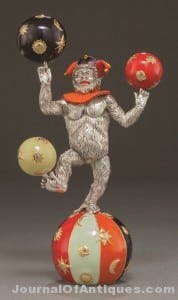
Philip Astley (1742-1814), a renowned British soldier and trick horse rider, was responsible for creating the “modern circus” during the 1700s. His premiere performance debuted on January 4, 1768 within a 42 foot circle, while riding totally erect with the aid of centrifugal and centripetal forces. Eventually, when he added professional “tumblers, tightrope walkers, performing dogs and the clown “Mr. Merryman” to his act he perfected the show.
The name “circus” was first used by Astley’s ex-employee and rival, Charles Hughes, in 1782 for his “Royal Circus and Equestrian Philharmonic.” John Bill Ricketts, a student of Hughes and equestrian also brought the first circus to the United States, and opened it on April 3,1793 in Philadelphia. It was so popular George Washington went to see it when it came here.
P.T. Barnum (1810-1891) was one of the pioneers of circus memorabilia. He personally manufactured his own, and even wrote books featuring his animal menagerie. “Lion Jack: A Story of Perilous Adventure Among Wild Men and the Capturing of Wild Beasts, Showing How Menageries Are Made” was one of his most popular and was originally published in 1876.
“Before Barnum there was no family entertainment,” said Kathleen Maher, Executive Director/Curator of the Barnum Museum.
Never forgetting how much the public loved the “American Museum” he opened on Broadway in New York in 1842, at 61, Barnum saw possibilities in joining W.C. Coup and Dan Castello to start a circus known as “P.T. Barnum’s Grand Traveling Museum, Menagerie, Caravan, and Circus.”
“Overall Barnum saw himself as a museum man,” said Maher. “One of his favorite sayings was, “The noblest art is that of making others happy.”
P.T. Barnum’s museum was created as a retirement project, and while he laid the groundwork for it in 1891 it was finished in 1893. A jewel in Bridgeport, Connecticut’s cultural crown some of the exhibits collectors can visit include “Baby Bridgeport” a large mounted elephant who was the “second born in captivity,” a 1,000 square foot scale model circus and mementos of General Tom Thumb.
While he was successfully operating his circus at the New York Hippodrome, which later became Madison Square Garden, Barnum became aware of competition from James Bailey’s “Great London Show.” Later, after talking him into a merger in 1880, they became “Barnum and Bailey” and started making circus history. One of their most successful decisions was when they bought Jumbo the elephant from England’s “Royal Zoological Gardens.” After Barnum died Bailey took over “Barnum and Bailey Circus.”
In 1884, the Ringling Bros. started their own circus in Baraboo, Wisconsin by partnering with someone more experienced. It was called “Yankee Robinson and Ringling Bros. Double Show.” After Robinson’s death, five of the Ringling brothers (Albert, Otto, Alfred, Charles and John), became the owners. Utilizing their various talents each contributed to the success of their circus either as a performer or in management. One of the most important aspects of their organization, and the reason they’re still around, is they promised clean family entertainment with no profanity or illegal activity allowed at their shows.
“Today all ages come to the Ringling Museum, so it’s a family experience,” said Lemmer Posey. “For the older population it represents nostalgia and a way to share with the younger generation something they enjoyed when they were younger, and for the younger generation it’s a way to experience what the circus was like in its heyday.”
During 1907 Ringling Bros. bought “Barnum and Bailey” and finally combined the two in 1919 to become “Ringling Bros. Barnum and Bailey Circus.” Despite the rocky road circuses have had following stiff competition from World War I and World War II, the Depression, and Hollywood circuses have continued delighting us in one way or another. For collectors of circus memorabilia it doesn’t matter whether the circus is in or out because they’ll always have something to connect them to their childhood memories.
The Circus Memorabilia is Coming to Town!
- Barnum Museum (www.barnum-museum.org), 820 Main Street, Bridgeport, Connecticut, 06604. Phone: 202-331-1104, contact: Executive Director/Curator:
Kathleen Maher, kmaher@barnum-museum.org.
a) Exhibits to see: Baby Bridgeport (6’8”, 700 pound mounted elephant), 1,000 square foot scale model of a five-ring circus carved by William Brinley of Meriden, Connecticut, General Tom Thumb’s (Charles Stratton) “original furniture, clothing, and personal objects”. - John and Mabel Ringling Museum of Art (www.ringling.org), 5401 Bay Shore Road, Sarasota, Florida 34243. Phone: 941-359-5700, contact: Associate Curator: Jennifer Lemmer Posey, Jennifer.LemmerPosey@ringling.org.
a) Exhibits to see: The Wisconsin Rail Car owned by John and Mabel Ringling, Howard Bros. Circle Model, Greatest Show on Earth mural by William Woodward, circus posters, Big Top Experience (interactive circus experience). - Circus Historical Society (CHS, www.circushistory.org)
- Toole Stott (Raymond) Circus Collection at University of California Santa Barbara, contact: zliebhab@library.ucsb.edu.
- Circus World Museum, (www.circusworld.wisconsinhistory.org), 550 Water St., Baraboo, Wisconsin 53913. Phone: 866-693-1500.
a) Exhibits to see: Circus Wagon Collection, Ringling Bros. Circus Winter Quarters. - Websites that offer circus memorabilia for sale.
a) www.eBay.com -vintage posters “1887” Lot of Two Original Vintage Circus Posters-$2,750.00, 1960s Hagan-Wallace Sells and Gray Paper Window Poster-$9.99.
b) www.Tias.com
c) Steve’s Collectibles (1949 Let’s Go To The Circus Record-$12.99, MOKO The Circus Monkey Jolly Book #202-1952-$26.99). This website is through www.tias.com.
d) www.oldstuffonly.com (Don and Chris’ Old Stuff Wholesale Vintage Antiques and Collectibles (1950s Ringling Bros. Popcorn Bag-$.50)
e) www.etsy.com (‘60s Circus Elephant Kitsch-$9.99, 1975, Norman Rockwell figurine, Dave Grossman Designs-$40, Vintage Circus Souvenir Program Ringling Bros. Barnum and Bailey 1950, 1959).
f) www.amazon.com (Benneweis Vintage Circus Program 1973 Rare, $29.95, Humphrey Bogart Autograph; In Display Battle Circus with June Alyson Autographs Original Lobby Card and Vintage Photos-$2,250).
g) www.vintage-antique-decor.com/clowns_circuses.htm (Emmett Kelly Jr. “After The Parade” Figurine Flambro-$149.99). - Auction Houses:
a) Philip Weiss Auctions, www.weissauctions.com, contact:brad@weissauctions.com
b) Heritage Auctions, www.ha.com, contact: Eric Bradley Public Relations Associate, ericb@ha.com
c) James D. Julia Auctions, www.JamesDJulia.com, contact: Andrew Truman, ATruman@JamesDJulia.com.


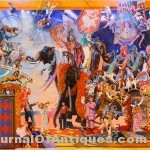
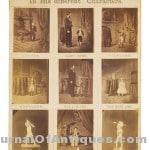

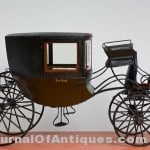
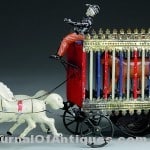
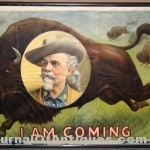
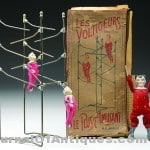
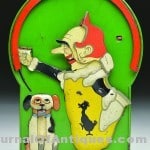




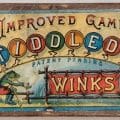
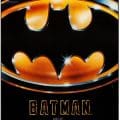
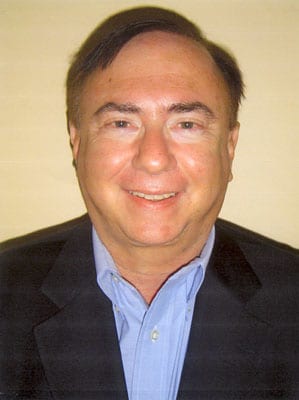
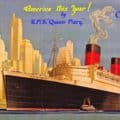


Pingback: Journal of Antiques and Collectibles August 2013 Issue | The Journal of Antiques and CollectiblesThe Journal of Antiques and Collectibles